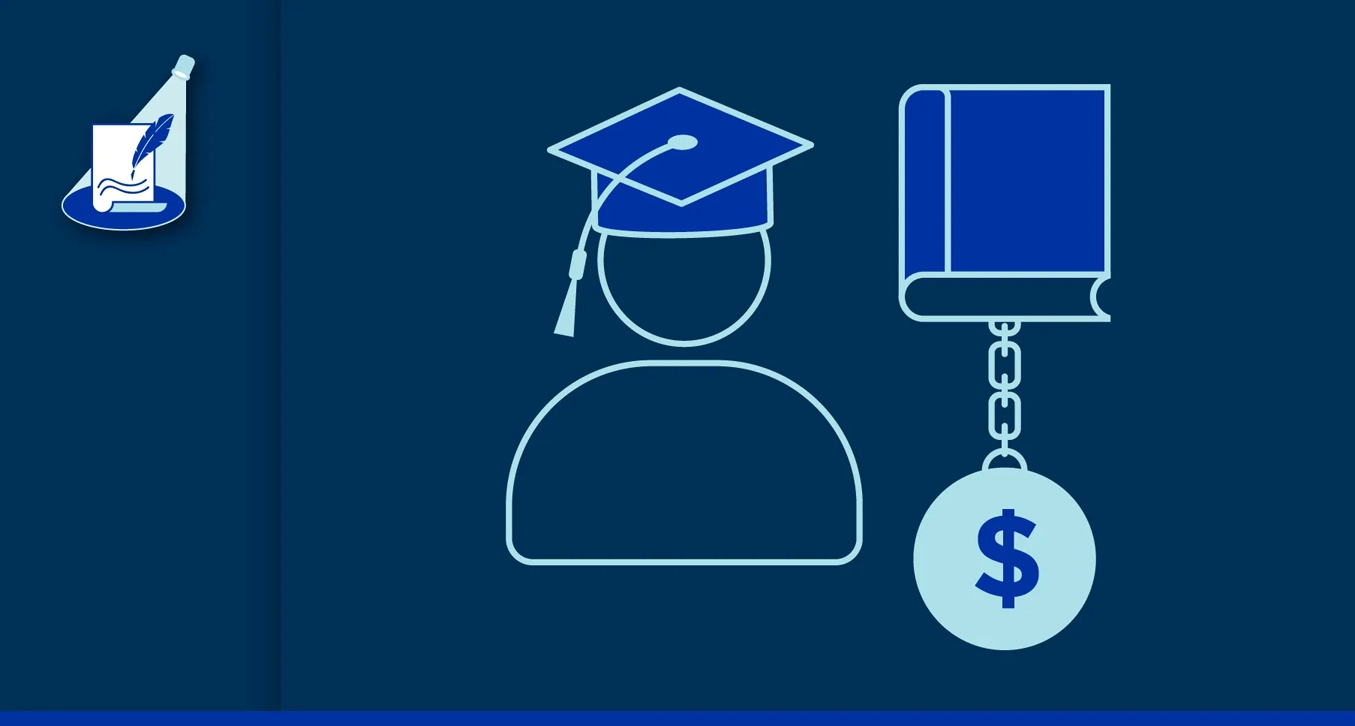43.5 million federal student loan borrowers will need to make payments next month for the first time in three years. Smart employers are providing workers with information and resource ensure that financial stress from the end of the federal student moratorium doesn’t hurt the health or job performance of their workforces.
43.5 million federal student loan borrowers will need to make payments next month for the first time in three years.
Smart employers are providing workers with information and resources to ensure that financial stress from the end of the federal student loan moratorium doesn’t hurt the health or job performance of their workforces.
To make it easy for all employers who are looking to inform employees about student loans, we put together a student loan borrower to-do list with the 3
things your workers should do and know, with the end of the federal student loan payment moratorium around the corner.
Student loan debt is a financial crisis for workers, businesses, our country
The added loan expense will stretch the limits of millions of monthly budgets, especially those of low- and moderate-income workers, the majority of our clients, with whom we’ve been planning for this day to come for months.
Among business, philanthropy, and public leaders, as Rob Scheinerman, then CEO at AIG Retirement Services, said, “there’s a “growing belief that student loan debt represents a financial crisis in the same way as concerns about our country’s retirement savings.”
Outstanding student loan debt nationwide exceeds $1.7 trillion, more than credit card or auto debt, representing a 100% jump since 2010. About one in four borrowers or 10 million people are now in delinquency or default.
More employers recognize student loan debt, health, productivity connections
Fortunately, the number is rising of employers who recognize the mental and physical health toll of student debt on workers and its connection to mental health, job performance, profit, and impact.
As employers look for ways to attract and retain talent, offering student loan repayment assistance is one powerful way to differentiate yourself, demonstrate leadership, support equity, and strengthen your organization.
Simply sharing info shows workers you care, brings benefits
And, even if student loan repayment assistance is out of the question at the moment, simply sharing information and resources about student loans demonstrates to your workers that you understand their challenges and care about their wellbeing, which has its own benefits.
Per Gallup, employees who strongly agree that their employer cares about their overall wellbeing are 69% less likely to actively search for a new job, 71% less likely to report experiencing a lot of burnout, and three times more likely to be engaged at work.
Here’s what your workers need to know to be in the best position possible as the federal student loan payment moratorium reaches its end.
Student Loan To-Do List
First, contact your student loan servicer now to ask questions.
- Find them by logging into StudentAid.gov. Questions to ask:
- How much will my monthly payments be?
- What payment plans are available to me?
- If I sign up for automatic payments, will I get a discount?
- Is my contact info up-to-date (so I’ll know when/if any payment count adjustments are made toward Income-Driven Repayment and Public Service Loan Forgiveness Programs)?
Second, consider your options, including the SAVE Plan (and Fresh Start if you’re in default).
SAVE: For most borrowers, per the Biden administration, your best bet is likely to be The Saving on a Valuable Education (SAVE) Plan, with “the lowest monthly payments of any IDR plan available to nearly all student borrowers.”
Borrowers earning less than about $32,800 individually, or less than $67,500 for a family of four, would see $0 monthly bills. SAVE:
- Cuts in half the amount that borrowers have to pay each month from 10% to 5% of discretionary income for undergraduate loans.
- Raises the amount of income that is considered non-discretionary income and therefore is protected from repayment, guaranteeing that no borrower earning under 225% of the federal poverty level—about the annual equivalent of a $15 minimum wage for a single borrower—will have to make a monthly payment under this plan.
- Forgives loan balances after 10 years of payments, instead of 20 years, for borrowers with original loan balances of $12,000 or less. The Department estimates that this reform will allow nearly all community college borrowers to be debt-free within 10 years.
- Doesn’t charge borrowers with unpaid monthly interest, so that unlike other existing income-driven repayment plans, no borrower’s loan balance will grow as long as they make their monthly payments—even when that monthly payment is $0 because their income is low.
Fresh Start: Announced in April 2022, Fresh Start is a one-time temporary program from the U.S. Department of Education that offers special benefits for borrowers with defaulted federal student loans.
Per the U.S. Department of Education (DOE), Fresh Start automatically gives you some benefits, such as restoring access to federal student aid (loans and grants), stopping collections, and credit reporting changes.
But you need to act to claim the full benefits of Fresh Start like access to income-driven repayment (IDR) plans, student loan forgiveness programs, and short-term relief (forbearance and deferment).
To use Fresh Start to get out of default, you must contact your loan holder. If you don’t know who holds your loans, call 1-800-621-3115 (TTY 1-877-825-9923).
When you get out of default, you will choose a type of payment plan to repay your loans. Most borrowers enrolling in Fresh Start (about 80%) choose an IDR plan. Eligible loans for Fresh Start:
- Defaulted William D. Ford Federal Direct Loan (Direct Loan) Program loans.
- Defaulted Federal Family Education Loan (FFEL) Program loans.
- Defaulted Perkins Loans held by DOE.
Third, ensure your contact info is up to date regarding what DOE calls “Payment Count Adjustments Toward Income-Driven Repayment and Public Service Loan Forgiveness Programs.”
As a response to loan servicers who incorrectly tracked deferments or directed borrowers to forbearance instead of income-driven repayment plans, which cost many borrowers years of credited payments, DOE announced a one-time payment adjustment for all Direct Loans and federally-owned Federal Family Education Loans (FFELs).
More than 3.6 million William D. Ford Federal Direct Loan borrowers will receive at least three years of credit toward loan forgiveness, as a result.
The first group of eligible borrowers were informed by DOE on July 14, 2023, that they have loans that qualified for forgiveness. No further action is required from these borrowers to get this forgiveness.
“We will send these notifications out every two months until next year, at which point all borrowers who are not yet eligible for forgiveness will have their payment counts updated. Your student loan servicer(s) will notify you directly after your forgiveness is processed. Make sure to keep your contact information up-to-date with your servicer and on StudentAid.gov.”
The adjustment will happen automatically, unless you have commercially-held FFEL loans or your loans are in default, in which case, you should look into Fresh Start.







